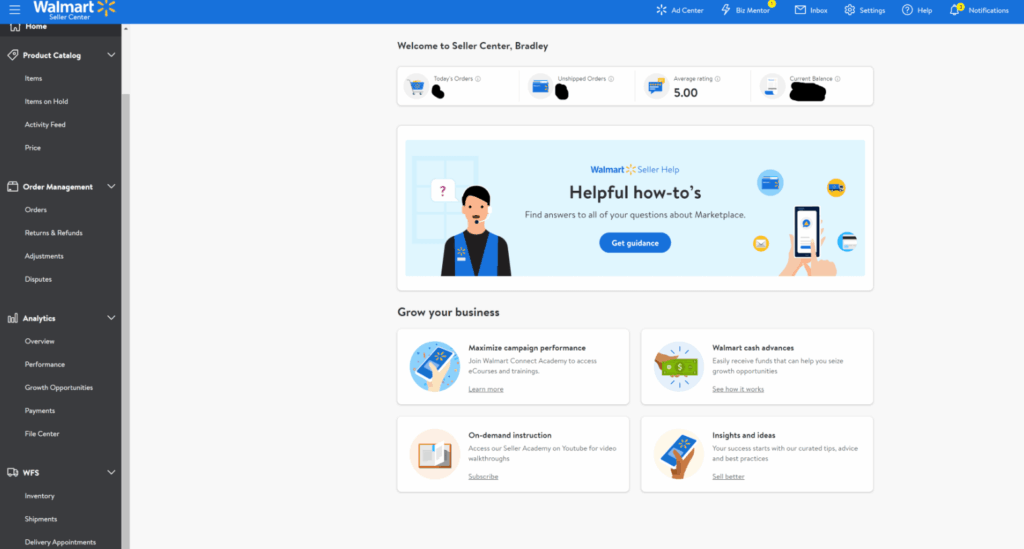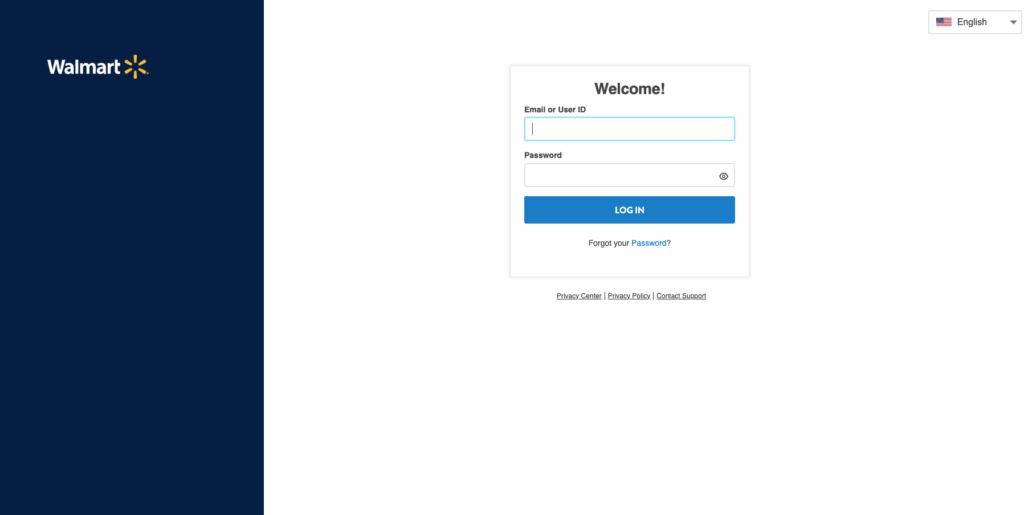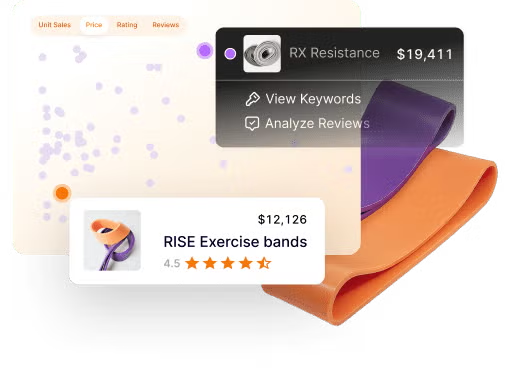If you’re looking to expand your business through the Walmart Marketplace, you’ll almost certainly encounter the platform known as Walmart Seller Center (often casually called “Seller Central”). This guide walks you through what it is, how to get started, how to manage your account (including the all-important walmart seller central login step), and how to run your store successfully. Drawing on recent guidance from the marketplace and real-world seller feedback, you’ll gain clear, actionable insight you can trust.
What is Walmart Seller Central?
Walmart Seller Center is the online dashboard and management system for third-party sellers on the Walmart Marketplace. Through this platform you can:
- Submit and manage your application to sell on Walmart.
- Upload and maintain your product listings (descriptions, images, SKUs).
- Track and manage your orders, inventory, returns and performance metrics.
- Access seller support, training resources and analytics tools.
Because the marketplace is curated and selective, being on the Walmart platform can offer competitive advantages – provided you meet their requirements and maintain high standards.

Why selling on Walmart via Seller Central is a compelling opportunity
Here are key benefits you should be aware of:
- Large audience: Walmart.com draws a very high volume of shopper traffic, giving sellers substantial exposure.
- Lower listing/entry costs: Unlike some platforms, there is no monthly listing fee for Walmart’s Marketplace; you pay when you sell (via referral fees).
- Less competition (in some categories): Because Walmart’s onboarding is selective, fewer sellers in certain niches can mean less crowded competition.
- Integration potential: For brands that already sell elsewhere (e.g., Amazon, Shopify), Walmart can be a strong channel for diversification.
However, these opportunities come with responsibility – you must meet Walmart’s performance expectations (shipping times, customer service, product quality) and stay compliant with their rules. Even you can get oppotunity to get walmart private label on this platform.
Requirements before you apply
Before you can use Seller Central, you’ll need to ensure your business is ready. Walmart expects sellers to meet certain standards. According to multiple sources:
- A valid U.S. business entity or presence; correct tax information (EIN, W-9/W-8) and business documentation.
- Established business operations with credible product quality, order fulfilment, shipping reliability and customer service track-record.
- UPC/GTIN codes for your inventory, correct categorisation, and ability to upload via bulk or API if you have larger volume.
- Willingness to adhere to Walmart’s policies (product eligibility, returns, shipping, performance metrics).
Meeting these upfront makes your onboarding smoother; failure to meet expectations may delay approval or hinder your performance once live.
Step-by-step: How to set up your Seller Central account and handle the login

Here’s a practical walkthrough of the process – including how to manage the walmart seller central login correctly.
Step 1: Apply to join the Walmart Marketplace
- Navigate to the Walmart Marketplace application page and complete the registration form.
- Supply your business name, tax ID/EIN, business location, product categories, number of SKUs, integration method (bulk upload/API) if applicable.
- Submit and await approval – this may take several days depending on completeness of your documentation and business profile.
Step 2: Prepare your Seller Central login credentials
- Once your application is approved, you will receive access credentials to log into Seller Central. You will specify (or be given) a user ID/email + password.
- The login page is typically at https://seller.walmart.com or a specific login URL provided by Walmart.
- Important: Keep your login secure, and assign access only to authorised users. Seller Central supports user/permission management so you can maintain control.
Step 3: Perform your first login (walmart seller central login)
- Go to the login page and enter your email/user ID and password.
- If you encounter issues logging in – wrong password, account locked, two-step verification problems – you can reset the password or contact support.
- Example troubleshooting steps: clear browser cache/cookies, try using incognito/private mode, or alternate browser. Sellers often report persistence of login errors.
- Once logged in, you’ll land on your dashboard where you can manage listings, orders, performance metrics, etc.
Step 4: Complete your seller profile and settings
- After login, fill out your business profile: shipping policies, return policies, fulfilment method (self-fulfilment or use Walmart Fulfillment Services (WFS)).
- Link your payment method / bank account for receiving disbursements.
- Set up your catalog: define categories, upload SKU details, prepare product data (descriptions, images, GTINs).
Step 5: Upload products and launch your store
- Use the “Manage Items” or equivalent section in Seller Central to add new products. For bulk listings, download Walmart’s template, fill in, then upload.
- Ensure your pricing, images, descriptions, shipping times are optimized and compliant.
- Before full launch, test your workflows (orders, shipping, returns) so you’re operationally ready.
Step 6: Ongoing login and account management
- Regularly log in to monitor your account health: performance metrics (on-time shipping, cancellations, returns), listing quality, and customer feedback.
- If you forget your password or your account is locked, use the “Forgot Password” link on the login page and follow reset instructions (validity periods apply).
- Consider enabling multi-factor authentication if offered; keep user access limited to trusted employees or partners.
- Stay updated: new features, policy updates, dashboard changes may affect your login or account experience.
Common login issues (and how to resolve them)
Given how critical the walmart seller central login is, let’s highlight typical problems and fixes:
- Forgot password / account locked: Use the “Forgot your password?” link on the login screen, enter your email associated with the account, follow the reset link (valid for 7 days).
- Browser issues: Clear browser cache/cookies, try incognito mode or a fresh browser. Some sellers report persistent errors unless they switch browser type.
- Two-step verification (2FA) problems: If your phone number has changed or app codes don’t work, you may be locked out. Contact support via the Help > Support path.
- New account awaits full activation: Even after approval, full dashboard access may take 48-72 hours. If you try logging in too early you might get errors.
- Email address mismatch: Ensure you’re using the exact email tied to your seller account, with correct spelling (copy-paste helps).
Pro tip: Before launching your full operation, make sure you can consistently log in, access all needed sections (listings, orders, payments) and that no alerts/locks exist in your account.
Best practices for managing your Seller Central account and maximizing success
Once your login is working and your account setup is complete, your ongoing performance matters. Here are expert-recommended best practices:
- Optimize product listings: Use high-quality images, clear titles and descriptions, relevant keywords. Good content improves visibility.
- Maintain accurate inventory and pricing: Avoid overselling, cancellations or stock-outs – these hurt your performance metrics.
- Deliver excellent customer service: Timely shipping, accurate tracking, responsive customer support. Walmart monitors these metrics closely.
- Utilize promotions & ads: Once your login access is solid and your store is live, explore Walmart’s advertising and promotional tools to boost visibility.
- Stay compliant and up to date: Policies change and performance expectations evolve – keep checking the Help/Support section within Seller Central or Marketplace Learn.
Summary & Take-aways
In sum: The walmart seller central login is your gateway to managing your Walmart Marketplace business. Setting up your account correctly, assuring reliable login access, and then using the dashboard effectively are foundational to your success.
Here’s a condensed checklist from Swansea Airport for you:
- Get your business/documents ready.
- Apply to Walmart and await approval.
- Receive login credentials and log into Seller Central.
- Set up shipping/returns/payouts and upload product data.
- Monitor your dashboard, maintain strong performance, use best-practice processes.
- Troubleshoot login issues proactively (password resets, browser issues, 2FA).
- Continuously optimize listings, customer service and metrics to grow.
Frequently Asked Questions (FAQs)
Q: What if I can’t remember my login email or password?
A: Use the “Forgot your password?” link on the Seller Central login page. If you no longer have access to the email, you may need to contact Walmart Seller Support via the Help menu inside Seller Central.
Q: Is it free to create a Seller Central account?
A: Yes – there are no monthly fees for listing products on Walmart Marketplace; you pay referral fees once you make sales.
Q: How soon can I start selling after login?
A: Once you are approved and logged in, you’ll need to complete your profile, upload listings, and ensure you’re operationally ready. This can happen quite quickly if all your systems are ready – ideally within a few days.
Q: Does having a login guarantee good performance?
A: No. A login gives you access, but long-term success depends on your seller performance: shipping speed, inventory accuracy, customer service, and listing quality all matter.


